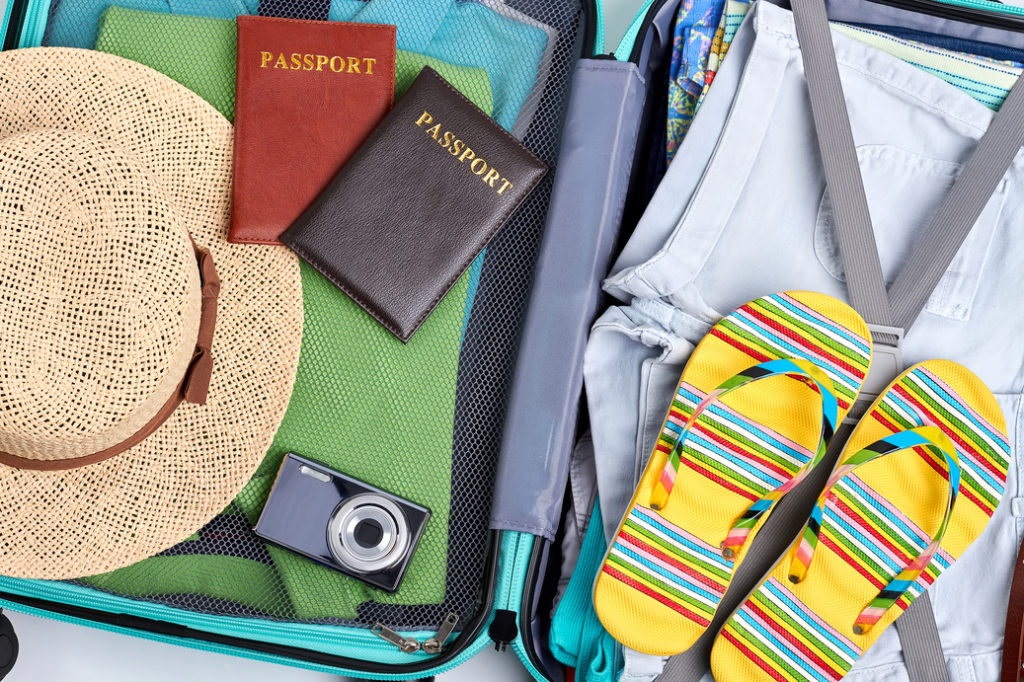When you’re planning your next vacation, it’s essential to consider how you can enjoy your trip while also protecting the environment. Sustainable travel is becoming more and more popular, as people realize that it’s good for the planet and their wallets.
This blog post will discuss sustainable travel tips that will help you have a great time on your vacation without harming the planet!
What is Sustainable Tourism?
Sustainable tourism is defined as tourism that does not harm the environment or local communities. Sustainable tourism is about making better choices when you travel so that you can protect the planet and its people.
If you’re a sustainable traveler, you aim to reduce your carbon footprint, support local businesses, and conserve natural resources. You might choose to travel by public transportation, stay in eco-friendly accommodations, or visit sustainable attractions.
Why is Sustainable Tourism Important?
Sustainable tourism is important because it helps preserve our planet for future generations. As the world becomes more industrialized and populated, it’s more important than ever to protect our natural resources.
Sustainable tourism can also help create sustainable jobs for local communities, which is crucial because it helps keep money in the local economy and preserves the area’s culture. Local people, not big businesses, are the heart of sustainable tourism.
Benefits of Sustainable Travel
There are many benefits to sustainable travel, both for the environment and the traveler. Here are some of the most important ones:
Reduces your carbon footprint
Sustainable travel is more environmentally friendly than traditional tourism, leaving a smaller carbon footprint. Carbon emissions from travel are one of the leading causes of climate change, so sustainable travel is a great way to help combat this problem.
Supports local economies

When you travel sustainably, you support local businesses instead of large corporations. This helps keep money in the local economy and promotes sustainable job growth. For instance, local guides are a great way to learn about sustainable attractions since they are intimately familiar with the culture and the land.
Preserves natural resources
Sustainable tourism aims to conserve natural resources, such as water and energy. When you’re on vacation, it’s easy to waste these resources without realizing it. For example, taking short showers or turning off lights when you leave your room can make a big difference.
Creates sustainable jobs
The sustainable tourism industry is multiplying, creating sustainable jobs for local people. Sustainable tourism provides training and opportunities for locals to learn about the industry and work in positions such as tour guides, drivers, cooks, and more. The travel industry is one of the largest employers in the world, so sustainable tourism is a great way to create sustainable jobs.
Builds cultural understanding
When you travel sustainably, you have the opportunity to immerse yourself in the natural and cultural heritage and learn about the people who live there. Sustainable travel provides a sustainable way for people from all over the world to come together and learn from each other.
Protects wildlife
Many sustainable tourism initiatives are focused on protecting wildlife. For example, sustainable lodges often work with local communities to create conservation areas where wildlife can thrive. When you visit these lodges, you can be sure that your money will protect the environment.
11 Tips for Sustainable Travel
Now that you know what sustainable travel is and why it’s important, here are some sustainable travel tips to help you plan your next trip:
Choose eco-friendly accommodations
Look for hotels or resorts certified by an organization like LEED (Leadership in Energy and Environmental Design) or Green Key Global. These hotels use sustainable practices such as energy conservation and waste reduction.
In addition, the environmental impact of your trip can be reduced by choosing a “green” hotel. For example, opt for a hotel that doesn’t use plastic water bottles or provides recycling bins.
Pack light

When you pack light, you reduce the amount of waste you create and save energy (and money!) on transportation. Try to limit yourself to one bag per person and only pack the essentials.
There are handy tools like the Packing Cube that can help you organize your belongings and avoid packing things you don’t need.
Buy local souvenirs
When you buy local souvenirs, you’re supporting the local economy and reducing the amount of waste produced by traditional tourism. Look for handicrafts or sustainable products to bring home with you. In this way, you support the local culture and protect the environment.
Don’t over-pack your itinerary
It’s important to enjoy your vacation, not feel rushed! Sustainable travel is all about taking things slow and enjoying the experience. This means leaving some time for spontaneous adventures and relaxation. Moreover, over-scheduling can lead to excess waste from unused transportation and meals.
Take public transportation
Public transportation is a great way to reduce your environmental impact. Not only does it save energy, but it also helps keep local air clean. In addition, using public transportation allows you to see the local sights and meet the people of the places you’re visiting. Plus, it’s also cheap and convenient!
Skip the plastic
Plastic waste and pollution are enormous problems, especially prevalent in tourist areas. Bring your own reusable water bottle and avoid buying single-use plastics like straws, cups, and bags. You reduce carbon emissions, conserve resources, and help protect wildlife by doing this. For instance, plastic bags often wind up in the ocean, where marine animals can ingest them.
Support sustainable businesses
When you’re on vacation, make an effort to support sustainable businesses. Look for restaurants that use local and organic ingredients or tour operators that focus on sustainable tourism. By doing this, you help reduce the negative impact of tourism and promote sustainable practices.
Visit sustainable attractions

Many sustainable attractions all over the world are worth visiting. While most tourist hotspots have negative environmental impacts, sustainable attractions are designed with conservation in mind.
Some sustainable attractions to consider include national parks, eco-lodges, and sustainable farms.
Offset your carbon footprint
You can offset your carbon footprint by planting trees or investing in renewable energy. There are many ways to do this, and you can even offset your travel emissions through sustainable tourism initiatives.
Additionally, you can offset your carbon footprint daily by making sustainable choices at home. For example, you can walk or bike instead of driving and recycle or compost your waste.
Choose airlines that care
Not all airlines are created equal when it comes to their environmental impact. Some, like Alaska Airlines and JetBlue, have committed to sustainable practices and offer passengers the option to offset their emissions. Some even use renewable biofuel to reduce fossil fuels usage.
When booking your flight, take a moment to research the airline’s sustainable practices. This will help you make an informed decision about which carrier to choose.
Try to learn the local language
Learning some basic phrases in the local language shows respect for the culture and can help you connect with locals. It can also be helpful in sustainable travel, as it allows you to communicate your needs without relying on English.
Moreover, learning the local language is a great way to immerse yourself in the culture and learn about sustainable practices.
Final Thoughts
Sustainable travel is all about being conscious of your impact on the environment. By following these sustainable travel tips, you can enjoy your vacation while protecting the planet.
Plus, sustainable travel is a great way to learn about new cultures and sustainable practices. So get out there and start exploring!
Do you have any sustainable travel tips to add? Share them in the comments below!







Leave A Comment